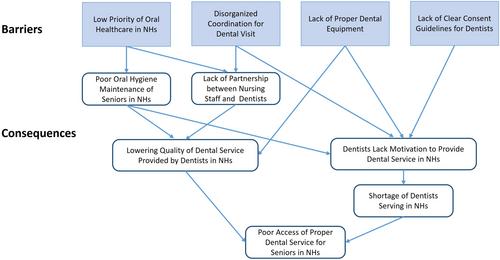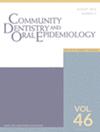Dentists' perspectives on structural and system barriers hindering oral healthcare provision in residential care facilities
Abstract
Objectives
Oral healthcare service is not well integrated with existing healthcare policy in nursing homes (NHs) globally. This qualitative study aimed to identify dentists' perspectives on structural and system barriers that hinder oral healthcare (OHC) provision to seniors in NHs in Singapore and to understand the consequences of these barriers.
Methods
Nineteen dentists (8 males and 11 females, 36.0 [IQR: 32.0–48.5] years old) were recruited through combination of purposive and snowball sampling. Four focus group discussions were conducted via teleconferencing, and each discussion had 4–5 anonymised participants. Sessions lasted 90–120 min and were audio-recorded and transcribed verbatim. Thematic analysis was conducted on data collected using NVivo software (Version12, QRS International).
Results
Participants agreed that the current OHC system for seniors in NHs is not well developed. The challenges dentists faced were categorised in three themes: [1] general oral healthcare system level; [2] local nursing home setting level; and [3] geriatric oral healthcare education level. These challenges are complexly intertwined and have contributed to several consequences such as a shortage of dentists in NHs and their diminished motivation to serve. It has also limited the quality of dental service they are able to provide in NHs, contributing to the current poor access of dental services for seniors in NHs.
Conclusions
Dentists in Singapore face many structural and systemic barriers in providing OHC to seniors in NHs, some of which are unique to the local context. Newfound understanding of these barriers and its consequences will be helpful in developing strategic approaches to overcome these challenges.


 求助内容:
求助内容: 应助结果提醒方式:
应助结果提醒方式:


